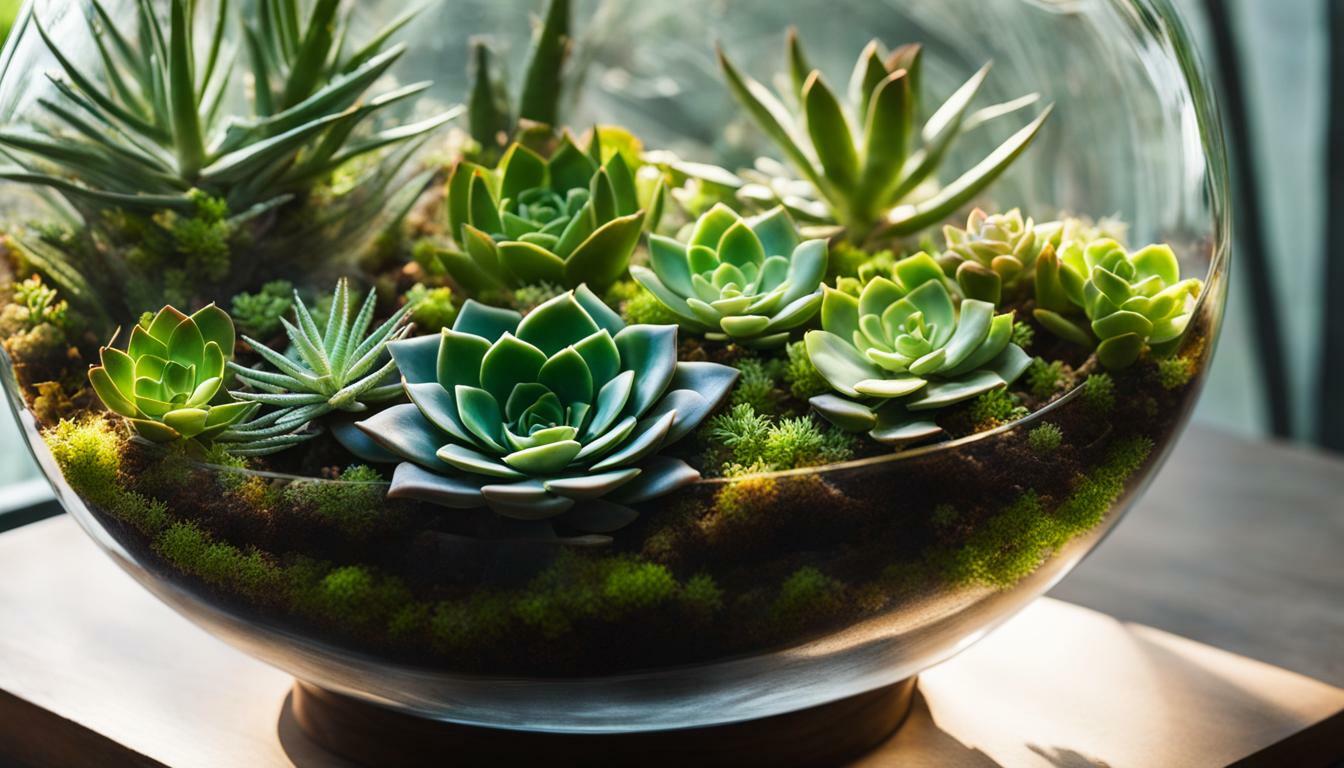Succulent terrariums are a great DIY project that can add a touch of natural decor to any space. These miniature gardens enclosed in glass containers have become a popular trend in home decor, offering a unique and vibrant way to bring the beauty of nature indoors.
When it comes to succulent terrariums, the possibilities are endless. With their low maintenance requirements and wide range of textures and shapes, succulents are the perfect choice for creating visually stunning and long-lasting terrarium displays.
- Creating a succulent terrarium is a fun and rewarding DIY project.
- Succulents are low maintenance and offer a wide range of textures and shapes.
- To create your own succulent terrarium, you’ll need a glass container, gravel or pebbles for drainage, charcoal to prevent mold, succulent-specific soil, and small succulents.
- Plant your succulents starting with the largest one and add smaller ones around it for a visually appealing arrangement.
- Proper care includes misting the terrarium with water, placing it in a bright, indirect light, and watering only when the soil is dry.
With these expert tips, you can create vibrant spaces with succulent terrariums that bring the beauty of nature into your home.
Why Choose Succulent Terrariums
Succulent terrariums are a popular choice for a number of reasons, including their low maintenance and the wide range of textures and shapes that succulents provide. These unique plants require minimal care, making them perfect for busy individuals or those lacking a green thumb. With their ability to store water in their leaves, succulents can thrive in arid conditions, reducing the need for frequent watering.
One of the main attractions of succulent terrariums is the variety of textures and shapes that these plants offer. From smooth and glossy to spiky and prickly, succulents come in a diverse range of forms. This allows you to create visually striking arrangements by mixing and matching different textures and shapes. Whether you prefer a modern and minimalist design or a more whimsical and eclectic style, there is a succulent terrarium that can suit your aesthetic.
Additionally, succulent terrariums are versatile in their placement options. They can thrive in both indoor and outdoor environments, as long as they receive adequate light and proper care. Whether you place them on your desk at work, on a windowsill in your living room, or as part of an outdoor garden display, succulent terrariums can add a touch of natural beauty to any space.
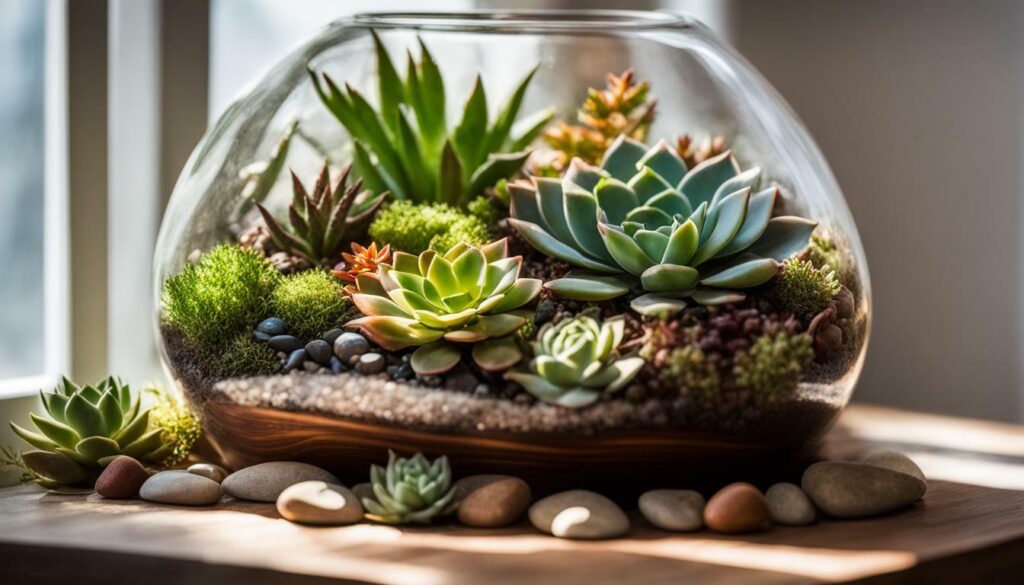
| Benefits of Succulent Terrariums | Maintenance Tips |
|---|---|
| Low maintenance | – Water only when the soil is dry. |
| Range of textures and shapes | – Choose a variety of succulents to create visual interest. |
| Versatile placement options | – Place indoors or outdoors, as long as they receive adequate light. |
Creating Your Own Succulent Terrarium
To create your own succulent terrarium, you’ll need a few key materials. The first is a glass container with an opening, which will serve as the home for your succulents. Choose a container that is transparent and allows for proper light penetration. This will help create an optimal environment for your plants to thrive.
Next, you’ll need gravel or pebbles for drainage. Succulents don’t like to sit in water, so it’s important to provide proper drainage to prevent root rot. Place a layer of gravel or pebbles at the bottom of the container before adding any soil.
To prevent mold and maintain proper moisture levels, add a layer of charcoal on top of the gravel. The charcoal will help absorb excess moisture and keep your terrarium fresh and healthy.
Finally, choose a succulent-specific soil for planting your terrarium. This type of soil is well-draining and provides the right nutrients for succulents to thrive. Fill the container with soil, leaving enough space for your succulents to be planted.
| Materials: | Quantity: |
|---|---|
| Glass container with an opening | 1 |
| Gravel or pebbles | Sufficient amount for layering |
| Charcoal | A thin layer |
| Succulent-specific soil | Sufficient amount for filling the container |
Once you have all the materials ready, you can start creating your succulent terrarium. Follow these steps to plant your succulents:
- Add a layer of gravel or pebbles to the bottom of the container for drainage.
- Place a thin layer of charcoal on top of the gravel to prevent mold.
- Fill the container with succulent-specific soil, leaving enough space for planting.
- Now, you can start planting your succulents. Begin with the largest one and plant it in the center of the container.
- Add smaller succulents around the largest one, creating a visually pleasing arrangement.
Remember to leave some space between the plants to allow for growth. Once you’ve planted your succulents, you can add decorative accents like driftwood or stones to enhance the overall aesthetic of your terrarium.
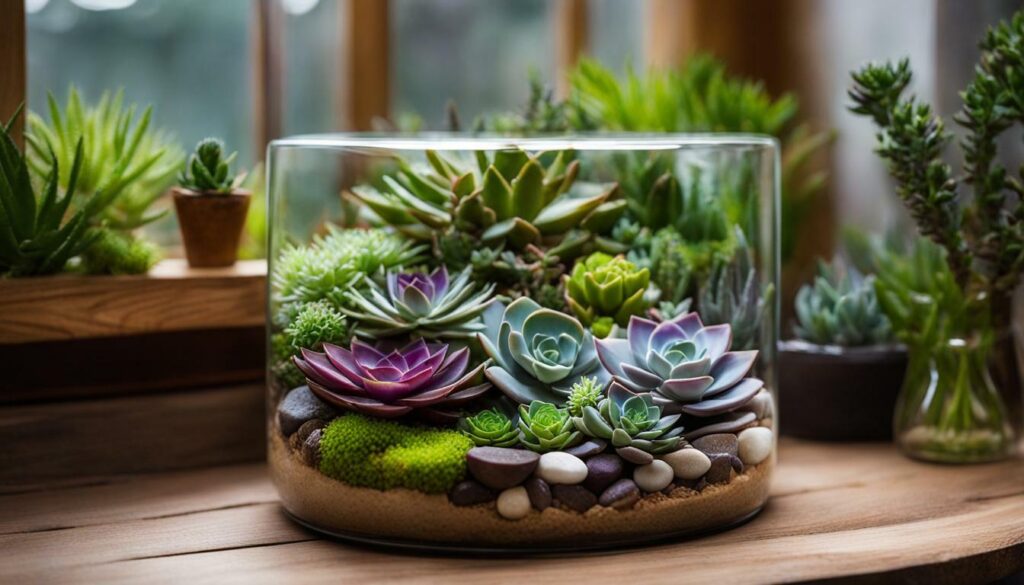
Now that your succulent terrarium is complete, it’s important to provide it with the right care and conditions to thrive. In the next section, we’ll explore the initial care and ongoing maintenance required for your succulent terrarium.
Planting Succulents in Your Terrarium
Start by adding a layer of gravel to the bottom of the container. This will help with drainage and prevent water from pooling at the bottom. Next, add a thin filter layer, such as a coffee filter, to prevent soil from seeping into the gravel. Finally, add a layer of succulent-specific soil.
Once the layers are in place, it’s time to plant your succulents. Begin with the largest one and carefully place it in the center of the terrarium. Gently press the roots into the soil and ensure that it is securely planted. Then, add smaller succulents around the larger one, arranging them in a pleasing composition.
Remember to leave enough space between the plants to allow them to grow. You can also add decorative accents like pebbles or small stones to enhance the visual appeal of your terrarium. This will create a beautiful contrast against the vibrant colors and textures of the succulents.
Table: Recommended Succulents for Terrariums
| Succulent Variety | Watering Frequency | Light Requirements |
|---|---|---|
| Echeveria | Once every 2-3 weeks | Bright, indirect light |
| Haworthia | Once a month | Indirect light |
| Sedum | Once every 1-2 weeks | Full sun to partial shade |
Once your succulents are planted, gently water the soil around the base of each plant. Be careful not to overwater, as succulents are prone to root rot. Only water when the soil is dry, and be sure to remove any excess water that collects at the bottom of the terrarium.
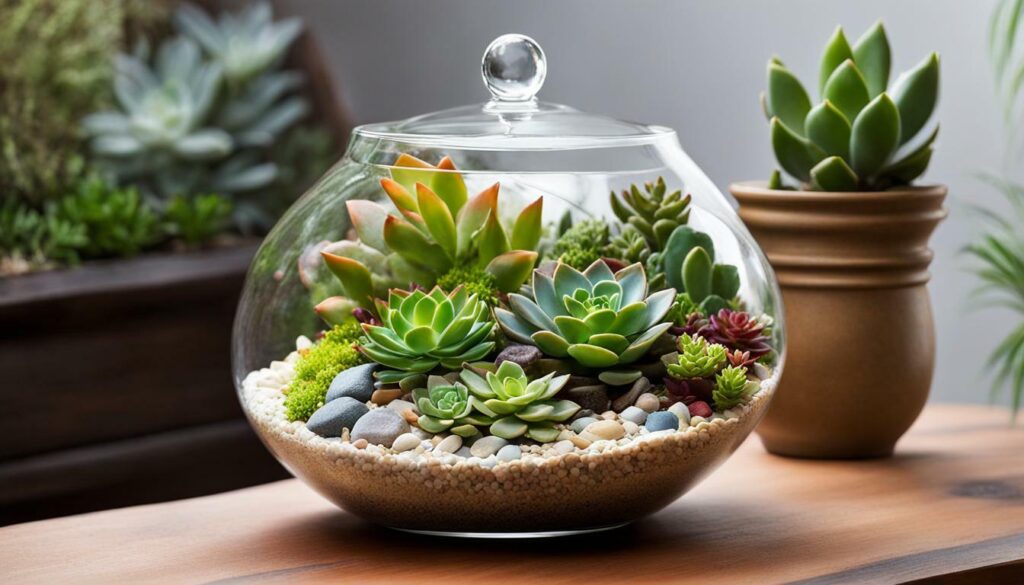
With the right care and maintenance, your succulent terrarium will thrive and bring a touch of vibrant, natural beauty to any space. Enjoy watching your succulents grow and flourish in this unique and low-maintenance indoor garden!
Adding Decorative Accents
To add visual interest to your succulent terrarium, consider incorporating decorative accents like driftwood or stones. These natural elements can enhance the overall aesthetic and create a unique focal point within your terrarium. Driftwood, with its weathered texture and organic shapes, can add a touch of rustic charm to your arrangement. Stones, on the other hand, offer a variety of sizes, colors, and patterns, allowing you to create different visual effects.
When selecting driftwood for your terrarium, look for pieces that are sturdy and free from any signs of decay. You can place a larger piece vertically to create height or lay it horizontally to give a sense of movement. Arrange smaller stones around the succulents to create a visually appealing landscape. Experiment with different combinations to achieve the desired look and feel.
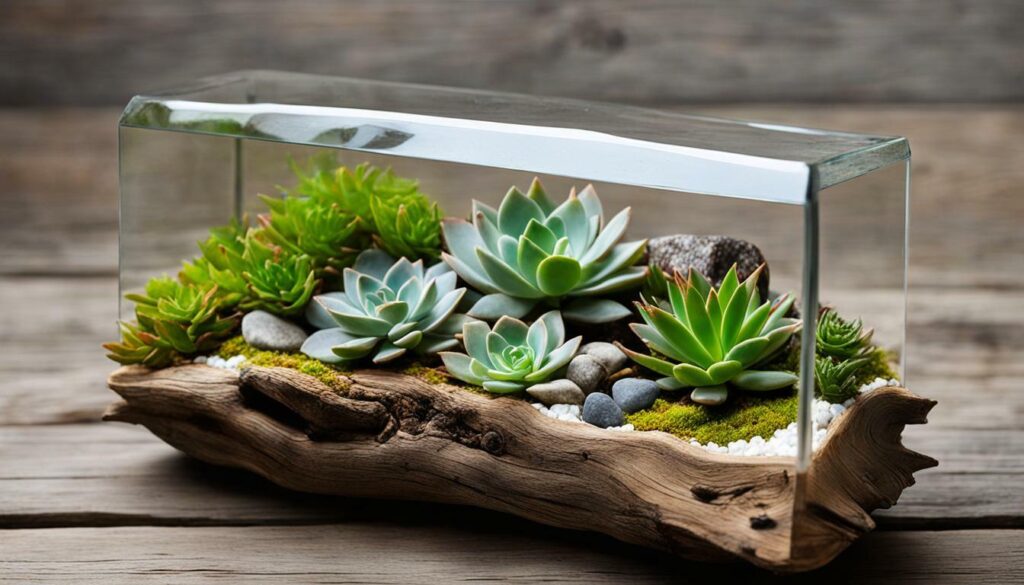
Incorporating decorative accents not only adds aesthetic appeal but also provides a natural backdrop for your succulents. They can create a more realistic and immersive environment, mimicking the succulents’ natural habitats. Additionally, these accents can serve as anchor points, helping to visually balance the arrangement and prevent any top-heavy or unbalanced appearance.
Tips for Using Driftwood and Stones
- Ensure the driftwood and stones are clean and free from any contaminants that may harm your succulents.
- Consider the size of your terrarium and the scale of the decorative accents to maintain a balanced composition.
- Arrange the driftwood and stones strategically to create visual interest and depth within your terrarium.
- Experiment with different textures and shapes of driftwood and stones to create a dynamic and visually appealing arrangement.
| Pros of Using Driftwood | Pros of Using Stones |
|---|---|
| Provides a natural and rustic appearance | Offers a variety of sizes, colors, and patterns to choose from |
| Can add height or create movement within the terrarium | Creates a realistic and visually appealing landscape |
| Acts as an anchor point to visually balance the arrangement | Allows for experimentation with different combinations |
Initial Care for Your Terrarium
After planting your succulents, mist the terrarium with water to get it started and place it in an area with bright, indirect light. Succulents thrive in natural light, but direct sunlight can cause their leaves to burn. So, it’s crucial to find a balance between light exposure and protection.
Misting the terrarium helps create a humid environment that mimics the conditions succulents enjoy. Use a misting bottle to spray a fine mist of water over the plants and soil. Be careful not to overwater, as succulents are susceptible to root rot. Always wait for the soil to dry out before watering again.
Rotating the terrarium every few weeks ensures that all sides of the succulents receive equal light exposure. This helps prevent the plants from leaning towards the light source and promotes even growth. Pay attention to the direction of the natural light in the room and adjust the position of the terrarium accordingly.
Lastly, regularly inspect your succulent terrarium for any dead or decaying leaves. These leaves can attract pests and detract from the overall appearance of the terrarium. Carefully remove any damaged leaves using clean tweezers or your fingertips, being mindful not to disturb the roots or other healthy parts of the plant.
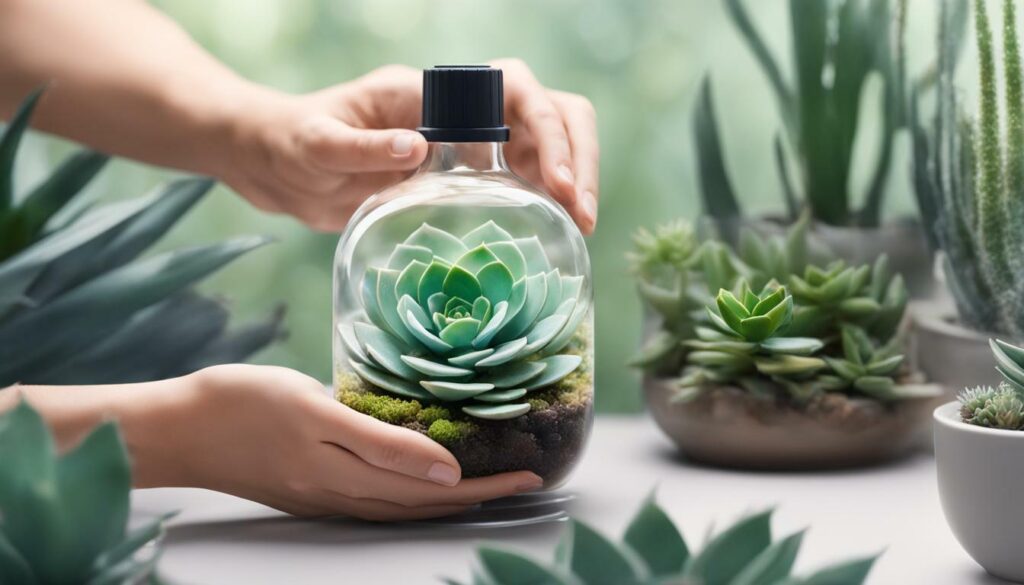
| Initial Care Tips for Your Succulent Terrarium |
|---|
| Mist the terrarium with water to create a humid environment. |
| Place the terrarium in an area with bright, indirect light. |
| Rotate the terrarium every few weeks for even light exposure. |
| Remove any dead or decaying leaves to promote overall health. |
Ongoing Care for Your Terrarium
Care for your succulent terrarium by watering it with a misting bottle or turkey baster, only when the soil is dry. Succulents are drought-tolerant plants, and overwatering can lead to root rot and other issues. To avoid this, it’s important to let the soil dry out between waterings.
To determine when it’s time to water your terrarium, gently press your finger into the soil. If it feels dry up to your first knuckle, it’s time to water. Fill your misting bottle or turkey baster with water and gently spray or pour it onto the soil, avoiding direct contact with the succulents.
Ensure that you’re using room temperature water, as cold water can shock the plants. It’s also important to avoid getting the leaves of the succulents wet, as this can lead to rot. Watering your terrarium once every 1-2 weeks is usually sufficient, but adjust the frequency based on the specific needs of your succulents and the humidity of your environment.
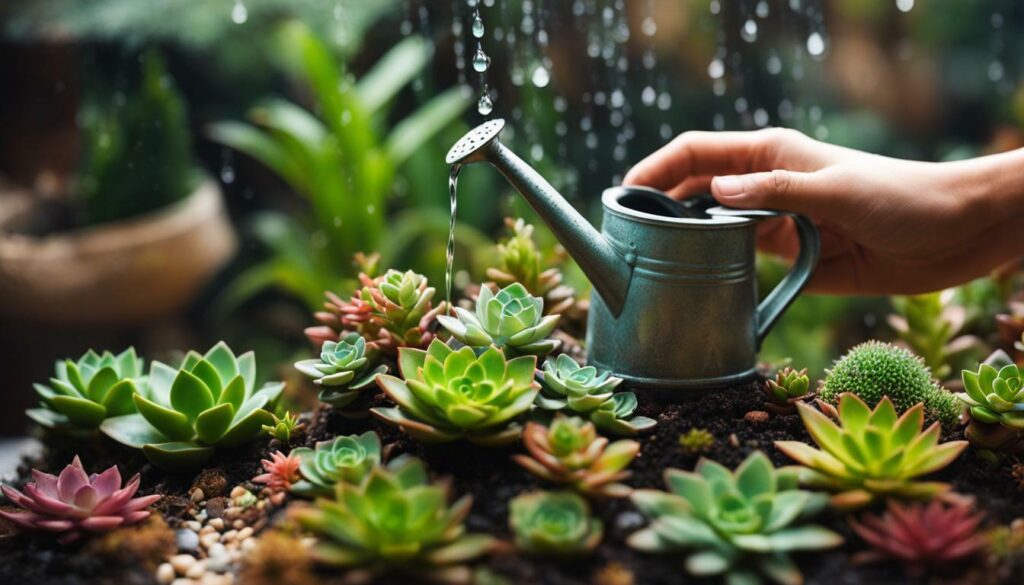
In addition to proper watering, your succulent terrarium also requires adequate light exposure. Place it in an area with bright, indirect light. Succulents require at least 6-8 hours of sunlight per day, but direct sunlight can cause their leaves to burn. If you notice that your succulents are stretching or leaning towards the light source, it’s an indication that they need more light.
Regularly inspect your terrarium and remove any dead leaves or foliage to maintain its appearance and prevent the spread of diseases. Dead leaves can attract pests and create a breeding ground for mold and fungal infections. Gently pluck or trim off any brown or dried-up leaves using clean scissors or tweezers.
By following these care instructions, you can ensure the health and vibrancy of your succulent terrarium, transforming any space into a beautiful and natural oasis.
Expert Tips for Vibrant Succulent Terrariums
Here are some expert tips to help you create vibrant succulent terrariums that will thrive in your space. Succulents are the perfect choice for these miniature gardens due to their unique shapes, textures, and colors. By following these tips, you can create a stunning terrarium that will become a focal point in any room.
1. Select Healthy Succulents
When choosing succulents for your terrarium, it’s important to select plants that are healthy and free from pests or diseases. Look for succulents with vibrant colors, plump leaves, and no signs of wilting or damage. Healthy plants will establish better in the terrarium and have a greater chance of thriving.
2. Consider Color and Texture Combinations
Experiment with different succulent varieties to create visually appealing color and texture combinations in your terrarium. Mix succulents with varying shapes, sizes, and colors to add interest and depth. Combining contrasting hues, such as green and purple, or different leaf textures, such as smooth and spiky, can create a stunning visual effect.
3. Provide Adequate Light
Succulents need plenty of bright, indirect light to thrive. Place your terrarium near a window where it can receive at least six hours of sunlight per day. If natural light is limited, you can supplement with artificial grow lights, making sure to position them at the correct distance from the plants to prevent burning.
4. Avoid Overwatering
One of the biggest mistakes in caring for succulent terrariums is overwatering. Succulents are adapted to dry conditions and can rot if their roots stay wet for too long. Water your terrarium sparingly, allowing the soil to dry out between waterings. Use a misting bottle or a turkey baster to target the water directly at the soil, avoiding the leaves and crown of the plants.
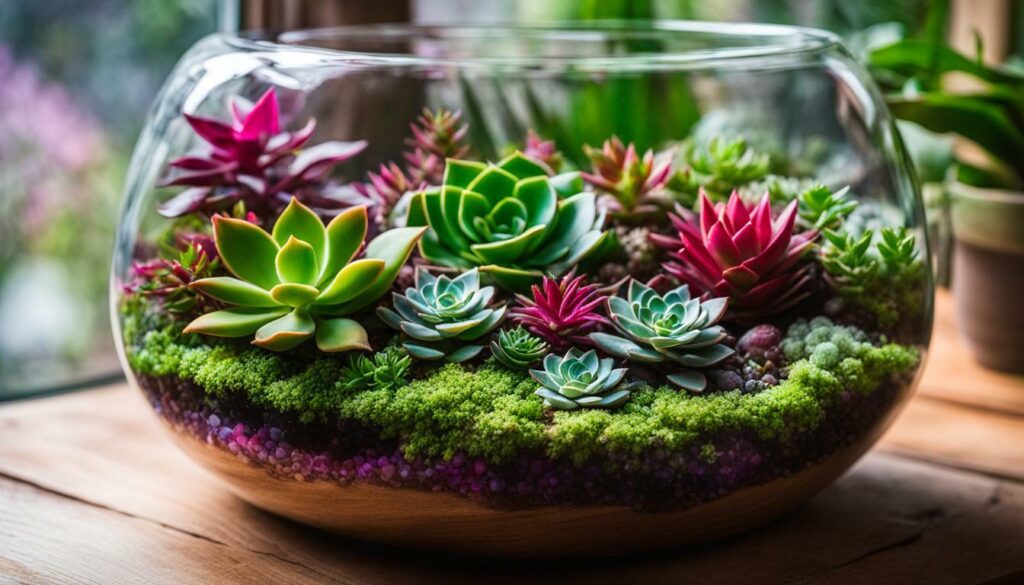
With these expert tips, you can create vibrant succulent terrariums that will bring life and beauty to your living space. Experiment with different plant varieties and combinations to unleash your creativity and create a personalized mini garden. Remember to provide the right amount of light and water, and your succulent terrarium will thrive for years to come.
Succulent Terrarium Inspirations
Get inspired by these succulent terrarium designs that showcase different types of containers and a variety of succulents, including cacti and other arid plants. These creative arrangements can add a unique touch to your living space and serve as eye-catching focal points.
For a modern and sleek look, consider using geometric glass terrariums. These containers come in various shapes and sizes, allowing you to create intriguing compositions. Pair them with succulents that have interesting textures and contrasting colors to create a striking visual impact.
If you prefer a more rustic or natural vibe, oversized glass jars or vintage-style terrariums can be perfect choices. Fill them with a mix of succulents and cacti, combining different shades of green and even incorporating flowering varieties for added charm.
| Container | Succulents |
|---|---|
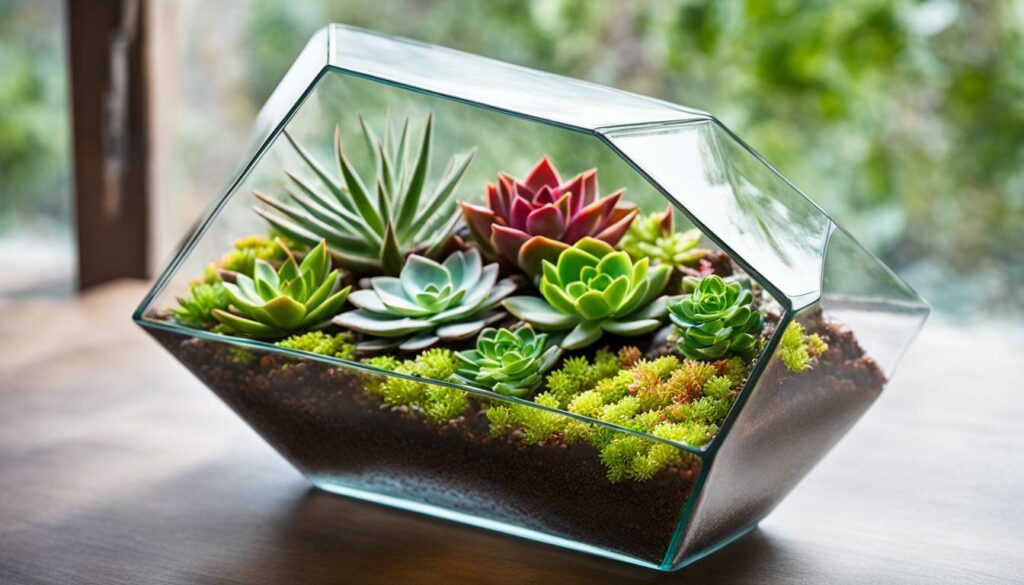 Geometric Glass Container | Echeveria, Haworthia, Sedum, Graptopetalum |
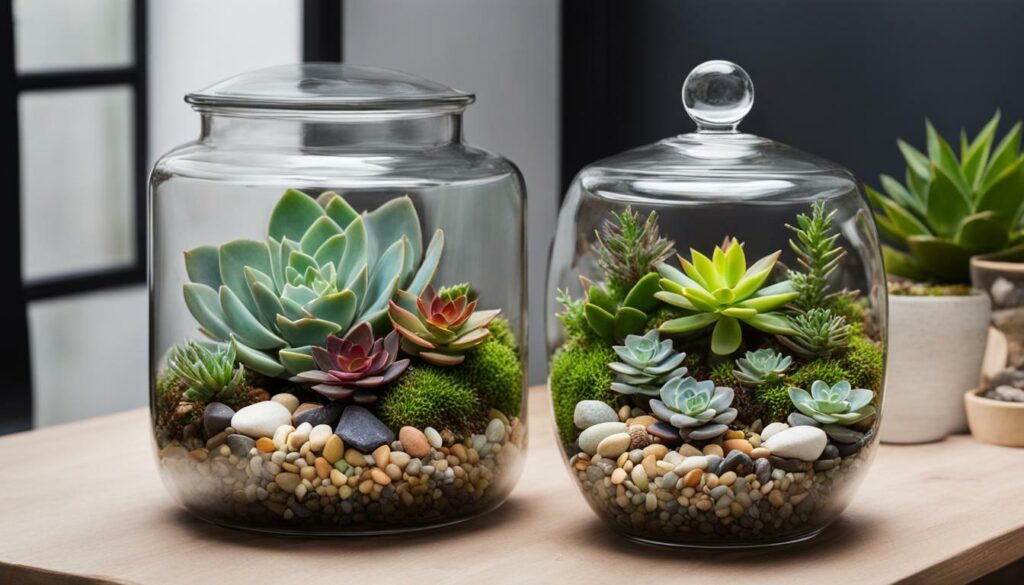 Oversized Glass Jar | Aloe, Agave, Euphorbia, Opuntia |
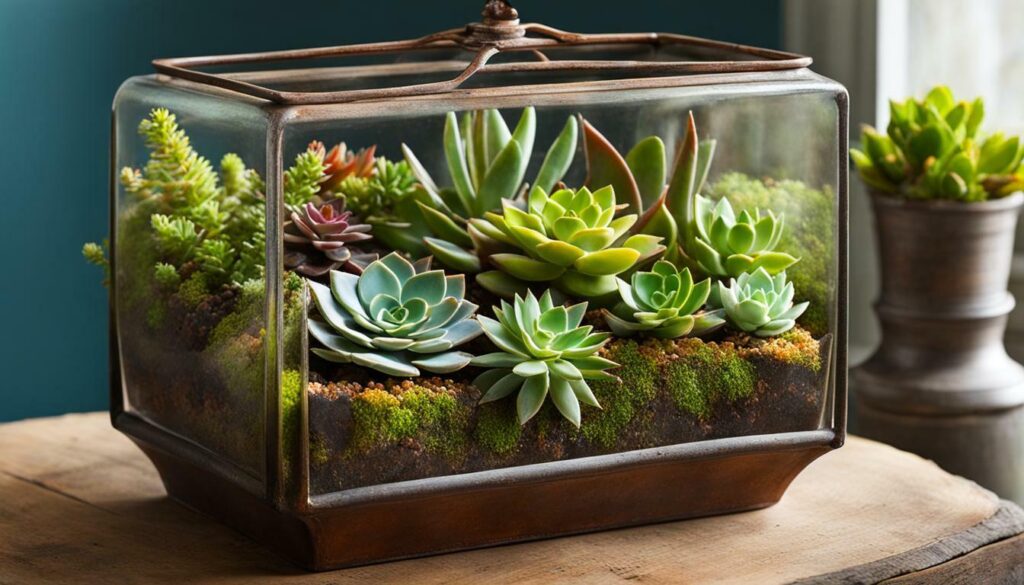 Vintage-style Container | Kalanchoe, Crassula, Senecio, Sempervivum |
Experiment with different arrangements and combinations to find the perfect match for your personal style and the overall vibe of your space. Remember to consider the lighting conditions in the area where you plan to display your succulent terrarium, as some varieties may prefer bright, indirect light while others thrive in more shaded environments.
These succulent terrarium inspirations offer endless possibilities for creating captivating displays that bring nature indoors. Whether you choose a minimalist or eclectic design, the combination of succulents, cacti, and other arid plants will surely add an element of natural beauty to your home or office.
Tips for Troubleshooting Succulent Terrariums
If you’re experiencing challenges with your succulent terrarium, here are some tips to troubleshoot common issues and ensure the health of your plants:
- Overwatering: One of the most common issues with succulent terrariums is overwatering. Succulents are desert plants and do not require frequent watering. To avoid overwatering, make sure the soil is completely dry before watering again. You can use a moisture meter or simply check the soil with your finger. If the soil feels damp, hold off on watering until it dries out.
- Inadequate Light: Another common issue is insufficient light. Succulents need bright, indirect light to thrive. If your terrarium is not receiving enough light, your succulents may become leggy and weak. Consider moving your terrarium to a location with more light or adding artificial grow lights to supplement natural light.
- Poor Drainage: Succulents are susceptible to root rot if they sit in waterlogged soil. Ensure your terrarium has proper drainage by using a layer of gravel or pebbles at the bottom of your container. This will allow excess water to drain away from the roots. Additionally, avoid overwatering and make sure your terrarium has adequate airflow to prevent excess moisture buildup.
- Pests: Keep an eye out for common pests such as mealybugs and aphids. These tiny insects can infest your succulents and cause damage. If you notice any signs of pests, isolate affected plants and treat them with a suitable insecticide or natural pest control methods.
By following these troubleshooting tips, you can address common issues and ensure the health of your succulent terrarium. Remember, each terrarium is unique, and it may take some trial and error to find the perfect balance for your plants. With a little patience and care, you’ll be able to enjoy a thriving and vibrant succulent terrarium.
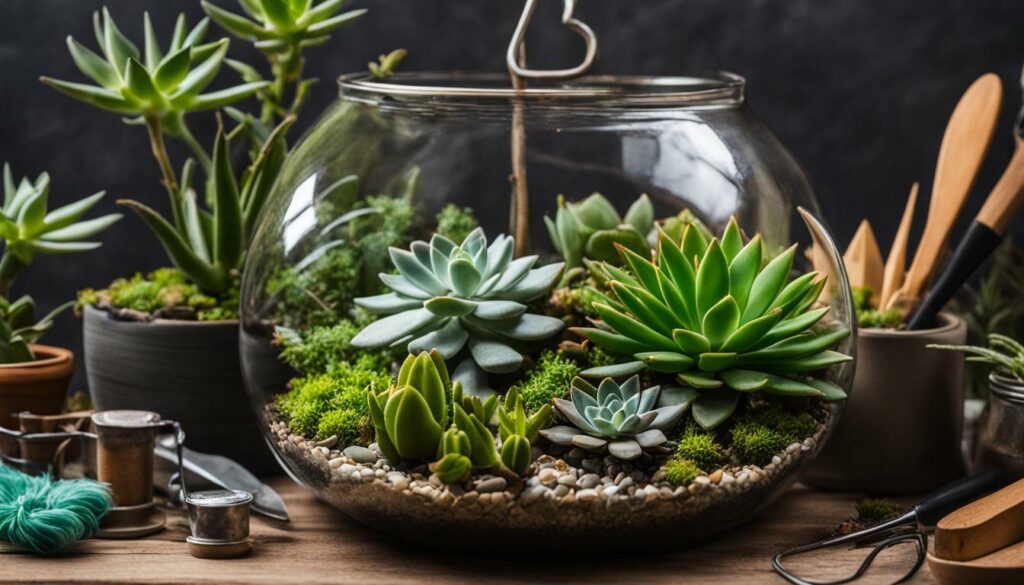
Table 1: Common Issues and Troubleshooting Tips for Succulent Terrariums
| Issue | Troubleshooting Tips |
|---|---|
| Overwatering | Avoid frequent watering and only water when the soil is completely dry. |
| Inadequate Light | Ensure your terrarium receives bright, indirect light, or supplement with artificial grow lights. |
| Poor Drainage | Use a layer of gravel or pebbles at the bottom of your terrarium for proper drainage. |
| Pests | Monitor for pests and treat affected plants with suitable insecticides or natural pest control methods. |
Conclusion
By following these expert tips, you can create vibrant spaces with succulent terrariums and enjoy the beauty of the green world in your own home.
Succulent terrariums are a great DIY project that can add a touch of natural decor to any space. Their low maintenance requirements make them an ideal choice for those looking to bring some greenery into their lives without the hassle of constant care.
With their range of textures and shapes, succulents offer endless possibilities for creating visually appealing terrariums. Whether you prefer a minimalistic design or a more intricate arrangement, there is a succulent that will fit your style.
To create your own succulent terrarium, start by gathering the necessary materials: a glass container, gravel or pebbles for drainage, charcoal to prevent mold, succulent-specific soil, and small succulents of your choice. Follow the step-by-step guide to plant your succulents, adding decorative accents like driftwood or stones for an extra touch of charm.
Maintaining your succulent terrarium is relatively easy. Misting the terrarium to provide moisture and placing it in an area with bright, indirect light will keep your succulents thriving. Remember to water only when the soil is dry and remove any dead leaves to ensure optimal growth.
So why not give succulent terrariums a try? With their beauty and simplicity, they are sure to bring life and vibrancy to any space. Start your own succulent terrarium project today and immerse yourself in the green world of natural decor.
Can the Expert Tips for Succulent Terrariums also be applied to Fairy Garden Terrariums?
Yes, the expert tips for succulent terrariums can definitely be applied to enchanted fairy garden terrariums as well. Both types of terrariums require similar care in terms of proper watering, soil selection, and adequate sunlight. However, fairy garden terrariums may also require added whimsical elements to create a magical atmosphere.
FAQ
Why choose succulent terrariums?
Succulent terrariums are a great choice because they require low maintenance and offer a range of textures and shapes.
What materials do I need to create a succulent terrarium?
To create a succulent terrarium, you’ll need a glass container with an opening, gravel or pebbles for drainage, a layer of charcoal to prevent mold, succulent-specific soil, and small succulents of your choice.
How do I plant succulents in my terrarium?
Start by adding a layer of gravel to the bottom of the container, followed by a thin filter layer and a layer of soil. Then, plant your succulents, starting with the largest one and adding smaller ones around it.
Can I add decorative accents to my succulent terrarium?
Yes, you can enhance the visual appeal of your succulent terrarium by adding decorative accents like driftwood or stones.
How should I care for my succulent terrarium?
Mist the terrarium with water to get it started and place it in an area with bright, indirect light. Water it only when the soil is dry using a misting bottle or turkey baster. Rotate the container for equal light exposure and remove any dead leaves.
What are some expert tips for vibrant succulent terrariums?
Select healthy succulents, consider color and texture combinations, and ensure proper care and maintenance to create vibrant succulent terrariums.
Can you provide inspirations for succulent terrariums?
Explore different containers and consider using various types of succulents including cacti and other arid plants for unique and inspiring succulent terrarium designs.
What are some troubleshooting tips for succulent terrariums?
Some common issues with succulent terrariums include overwatering and inadequate light. To troubleshoot, adjust your watering practices and ensure the terrarium receives enough light.

